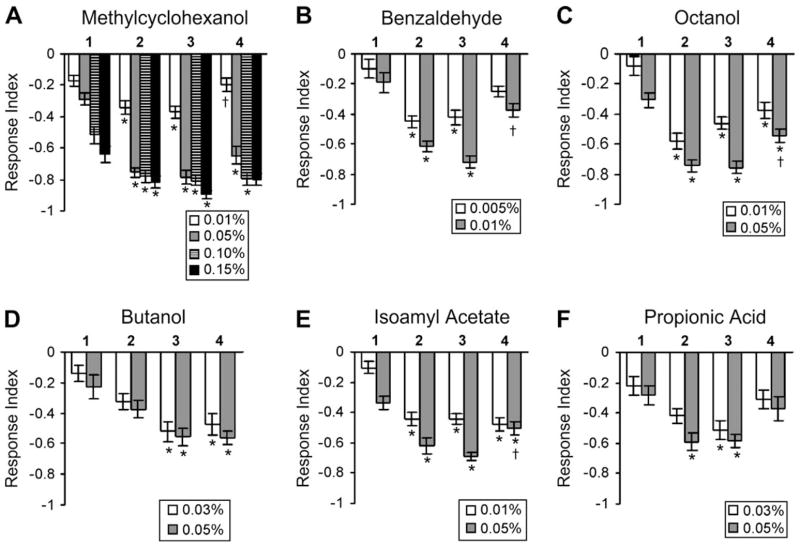Figure 4.
krz1 mutants demonstrate reduced olfactory avoidance. All genotypes were raised at the same conditions and examined for avoidance of different aversive odorants at the listed concentrations. A minimum of 16 groups were assayed for each data point. Significant effects of genotype were found for each odorant and concentration. In almost all cases, the krz1 exhibited a lower avoidance to the tested odorants than other groups. The b5.8; krz1-rescued flies had significantly higher avoidance scores than krz1 at most concentrations of each odorant tested, with the exception of 0.01% MCH, 0.005% BEN, and both concentrations of PA where no significant difference was found. The asterisk (*) indicates a significant difference with the hspGal4/+ control according to Bonferroni–Dunn post hoc analysis. The dagger (†) indicates where the b5.8; krz1-rescued flies are significantly different from the hspGal4/+ genotype. The b5.8; krz1-rescued flies were significantly different from the krz1/+ heterozygous flies at both concentrations of BEN but not for any other odor. The data demonstrate the olfactory deficit is due to the loss-of-kurtz function. The tested genotypes are as follows: 1. krz1 = P{UASkrz}T12/+; krz1, P{hspGal4}/krz1; 2. krz1/+ = P{UASkrz}T12/+; krz1/P{hspGal4}; 3. hspGal4/+ = P{hspGal4}/+; and 4. b5.8; krz1 = P{b5.8T12}; krz1 (in A, B, C) or P{b5.8T4}; krz1 (in D, E, F).

